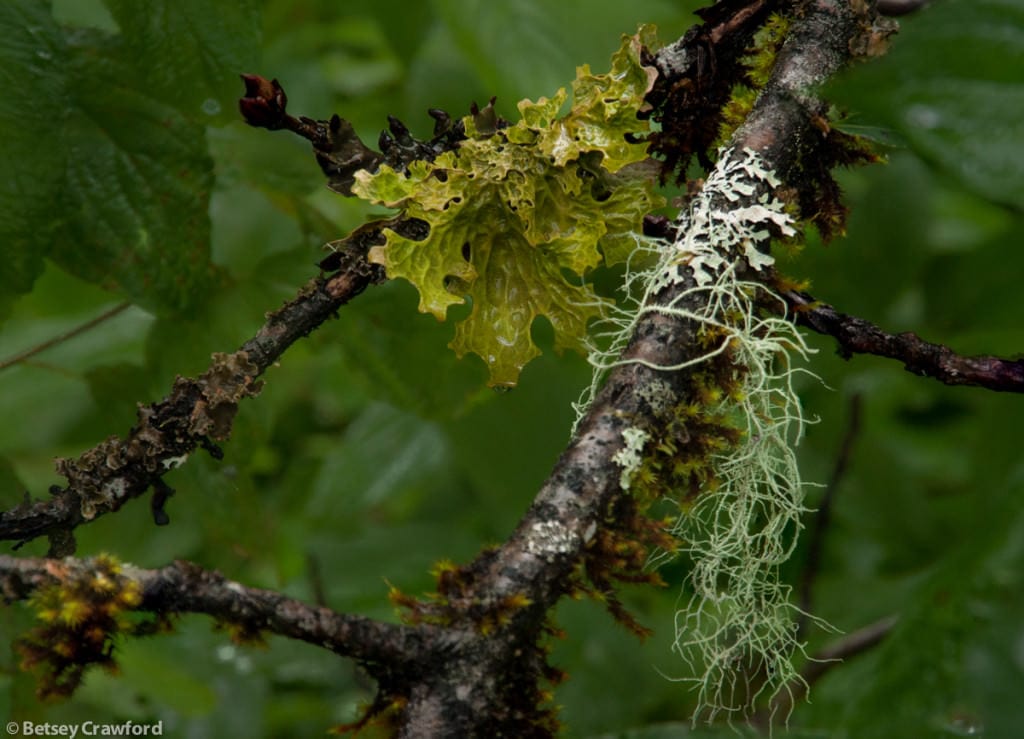 The farther I went north in the summer of 2015, the more I found a world full of lichen. It’s everywhere in Alaska, and a dominant species in the arctic tundra. But it’s everywhere else, too, covering 8% of the world’s surface. Lichen holds the desert in place, fills the forests, hangs off branches in cool, damp coastal woods as well as in warm swamps. It’s on the trees in your backyard, slowly covering your grandparents’ tombstones, growing on fence posts, spreading under your feet as you climb mountains.
The farther I went north in the summer of 2015, the more I found a world full of lichen. It’s everywhere in Alaska, and a dominant species in the arctic tundra. But it’s everywhere else, too, covering 8% of the world’s surface. Lichen holds the desert in place, fills the forests, hangs off branches in cool, damp coastal woods as well as in warm swamps. It’s on the trees in your backyard, slowly covering your grandparents’ tombstones, growing on fence posts, spreading under your feet as you climb mountains.
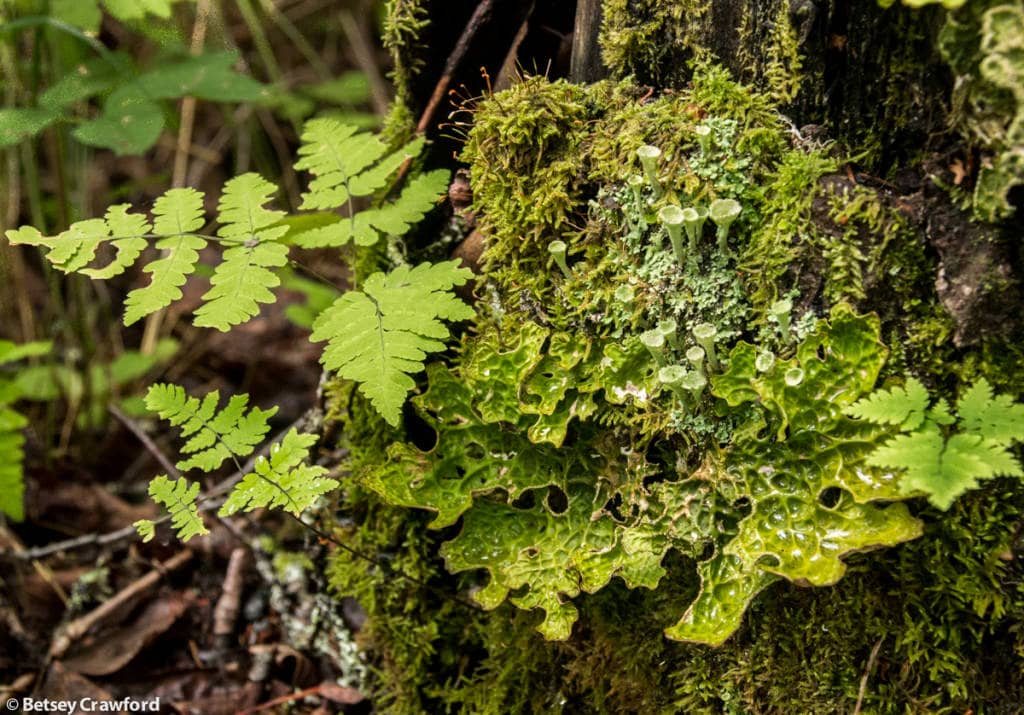
Lichen is indeed a village: it’s composed of varying forms of fungi, algae, and cyanobacteria living in symbiosis. Strands of fungi weave together to provide housing, which protects the algae and bacteria from environmental challenges like desiccation and UV radiation. The algae and bacteria provide food via sugars formed through photosynthesis. The resulting body, or thallus, lives on its substrate — wood, soil, rock, occasionally air — along with other members of the community, usually moss, often other forms of fungi and algae, and the trees, ferns, flowers, rocks, and animals of whatever environment it’s growing in.

Though I am no lichenologist — identifying the few lichens here that I’ve been able to name was a study in cross-eyed bewilderment — I’ve always been fascinated by them. I went to Denali National Park one day to hike, but, on finding a world covered with lichen, got down on the ground and spent the afternoon with them, in all their variety: tiny, lacy shrubs of one lichen run through with little branchlets of another, next to a large patch of dark brown sheets of felt lichen. A white crustose lichen so completely covered the flange of a tree stump that it wasn’t until I put my hand on it that I realized I was looking at wood, not granite. That white crust was dotted with a pink one. Tiny spires, holding up minute cups, occasionally edged in vivid red, grew all over the rest of the stump, happily embedded in moss.
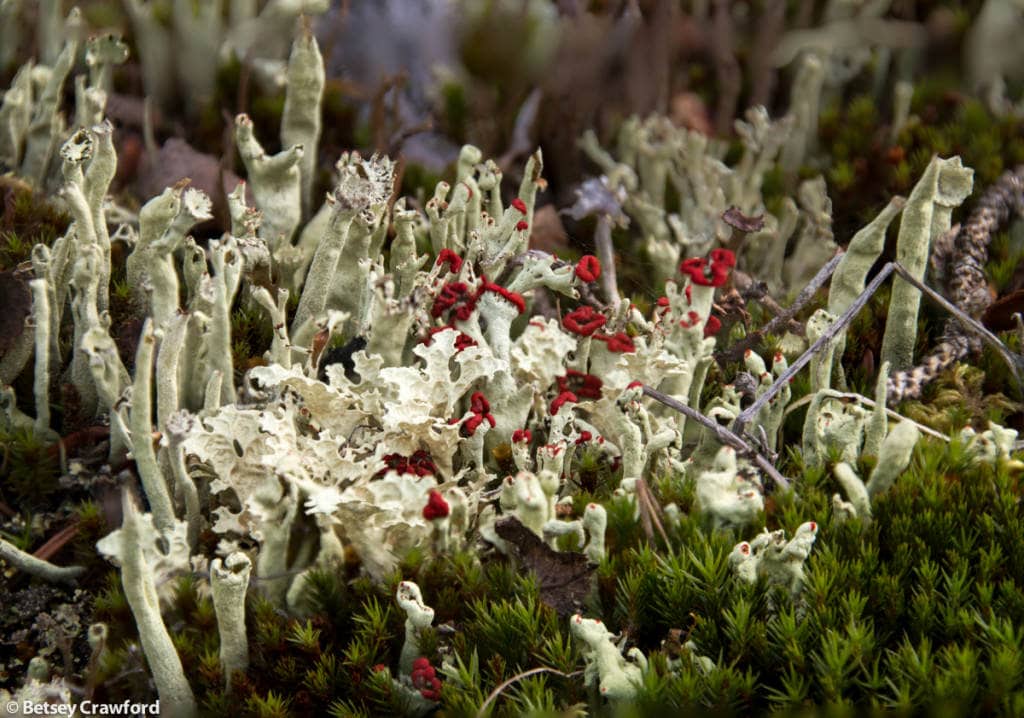
This plucky, endlessly adaptable, weirdly beautiful, not-plant, not-animal feeds reindeer and caribou. It holds and releases moisture, helpful to the plants that grow with it. It has some medicinal uses, and shows up in Japanese and Korean cuisines. Some are used as dyes, and some in making perfume. But its most important ecological contributions are its ability to take nitrogen from the air and add that essential element to the soil; its ability to live in, stabilize, and form soil in barren landscapes; and its ability to sequester carbon. Lichen, with the mosses and algae they grow among, all tiny and indomitable, take up as much carbon yearly as is released by the burning of forests worldwide. This amounts to 14 billion tons of carbon, as opposed to the 2.2 billion (and falling) tons absorbed by the Amazon rainforest.

As hardy and amazingly adaptable as lichens are in their natural habitats, they are threatened by several things, especially air pollution, deforestation, and global warming. The first limits healthy growth, the second habitat, and the third will begin to further limit habitat, as lichens sensitive to temperature will have to go to higher and higher altitudes to survive. Those that cannot will die out.
And here is where the larger questions come in. If you ask people whether they would prefer to drive cars to work or save lichens, most people would ask, “What’s lichen?” It wouldn’t be an issue at all. It would seem obvious that we’re more important than a bunch of fungus and algae mashed together and ruining our wooden fence. We’re letting species go extinct every day. Why would a few little lichen matter?
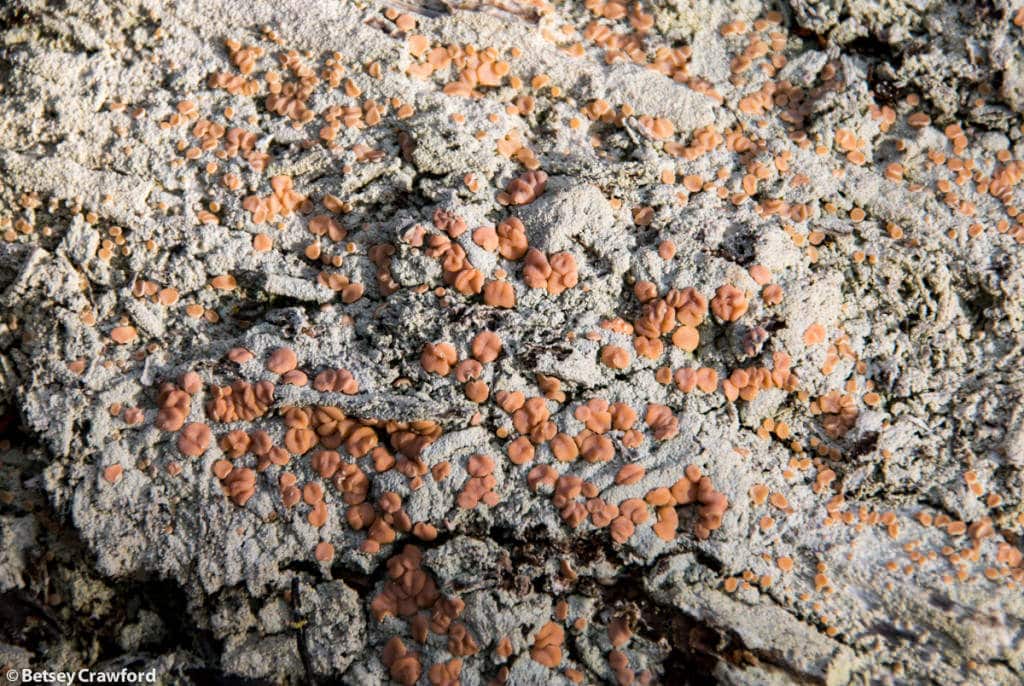
We don’t know why lichen matter. That’s the problem with every extinction. We see the stakes through human eyes. We want to get from place to place in our cars, we love computers, we need homes that are warm in winter and cool in summer. My home is tiny footprint, but I drove it to Alaska and back last year. Would I give up such incredible experiences to preserve the right environment for lichen? A challenging question!

We are part of the biome, and we need habitat. There is an infinity of things we can do to reduce our effect on the planet, but even if we do every one of them, humans will still have an outsized footprint. Species will be edged out. Others will hang on, threatened.
We know some of these extinctions will matter. If bees die out, we face a world without fruit, flowers, nuts. If lichen dies out we’ll first lose their ability to sequester carbon, which will be released into an atmosphere already threatened by rising carbon dioxide levels. So temperatures may rise further, endangering more and more species.
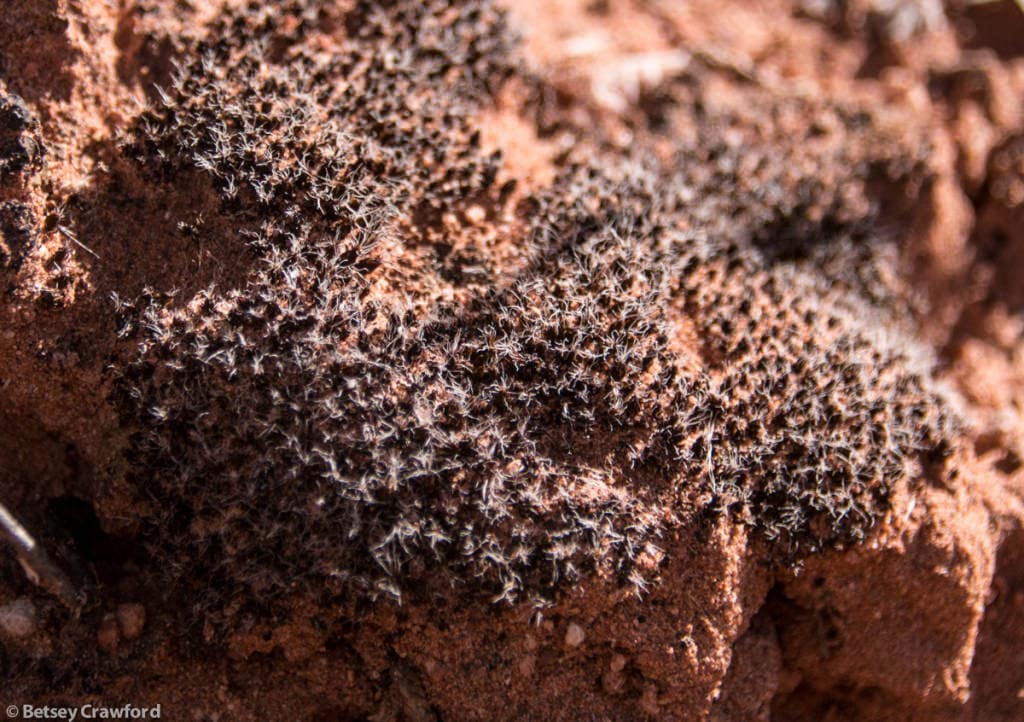
We would also lose a crucial soil producer and stabilizer. It’s hard for us to see, in the brown crusts of the sandy desert, how important a role those tiny, combined elements play in securing nutrients, water, and footing for roots. Hard to imagine the time span taken to break down rock into soil. To us, dirt has always been here, but we’re newcomers on the planet, perhaps even passers-by. The ramifications of such losses spread out like waves. Whatever we do to allow lichen to go extinct might well mean we’ve created a world inhospitable to us.

These questions are important, but they are also human-centered, asking of everything how it helps us. Cyanobacteria are 2.5 billion years old, among the earliest photosynthesizers on earth, producers of the oxygen-rich atmosphere that all subsequent biodiversity depends on. The earliest lichen fossils are 400 million years old. The earliest human fossil is 2.8 million years old. The forces that created the earth with infinite slowness ticked lichen off the formation list much earlier than humans. Perhaps we’re here to help lichen.
Every form in nature is part of a whole, a web woven together with meticulous evolutionary care. We can only pull so many of those threads out before the fabric begins to weaken. And there may be some combination of threads which, when pulled, will destroy the integrity of the whole. The problem is, we don’t know which ones, leaving us with the great challenge of caring for the entire village on our finite globe.
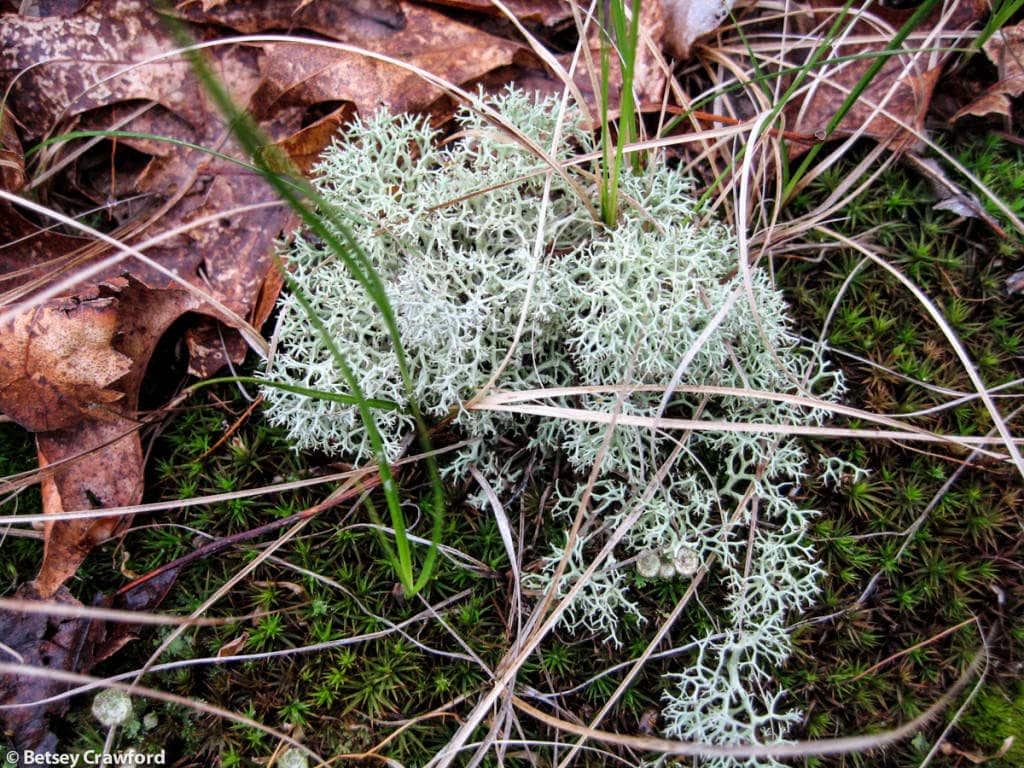
Within months of writing this essay lichen was in the news when a new neighbor in the village was discovered. The story of the discovery is as exciting as the new friend, and I wrote about it in Pursuing mystery: how we found out lichen has a third partner and is saving the earth.
Related posts:
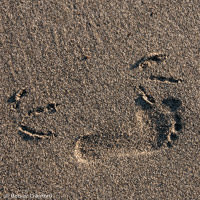
humans and dirt
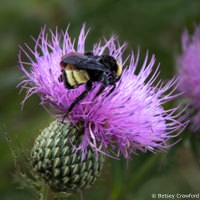
saving the world
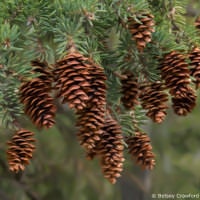
Yes… Good to be reminded that Everything is here for A REASON, and we aren’t the ones who “thought up Everything.” Nor has Everything been assembled as it is just for our benefit. (We are apparently pretty far down on the list of creation priorities, as you mention. And no, the Universe was probably not just getting Everything “ready” for us – it’s certainly just as “logical” to think that the most pivotal things came first, precisely because they are pivotal.)
I recall reading a wonderful book called “The World Without Us,” which made it clear that the planet would continue to thrive – and quite happily – were humans suddenly completely removed from the picture. In fact, much less harm would be done, which I’m sure comes as no surprise to anyone reading your posts.
Thanks for this wonderful piece… I’m looking forward to greeting all the interesting little stuff that’s working its way into and around the stump that supports our backyard birdbath! MLAA…
Wow! A lichen-eye view of the world is very different, very beautiful, and very important. Who knew? You did! Thanks for letting us in on this ground-shaking (ground-covering, really) news — so eloquently, as always. ❤️❤️❤️
Thanks, Annie. I’m now in love with the idea of ground-covering news.
Thanks, Betsey. Engaging and thought-provoking post. I am grateful for hearing your voice calling us to look at the smallest and greatest species.
Thanks, Peggy. So glad to ‘see’ you here.
Wow! Thank you for reminding me of the importance of Everything.
Thanks, Marcia. Love the capitalized Everything!
Enjoyable, educational and very readable, as usual. Thanks for the post.
Thank you, Bruce.
OMG ! The importance of things small and fragile to our network of life is astounding. Thank you so much for reminding us of the intricate web of life we so often miss altogether and rarely take the time to appreciate for making life possible. Beautiful text that brings lichen into focus for our otherwise solipsistic awareness. Worth sharing widely. Good on you, Betsey!
Thanks so much, Walter. Yes, our dependence on the tiniest things is astounding, and what we don’t know can definitely hurt us.